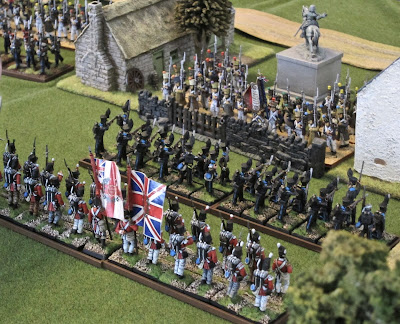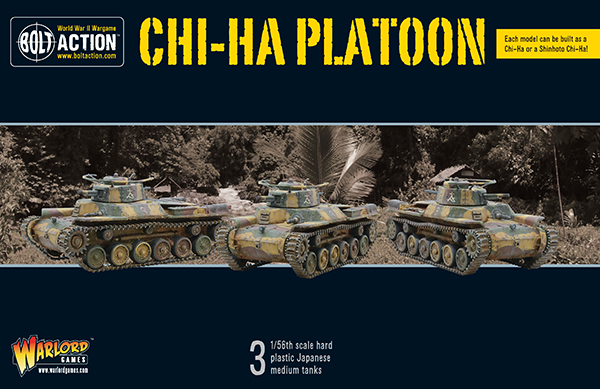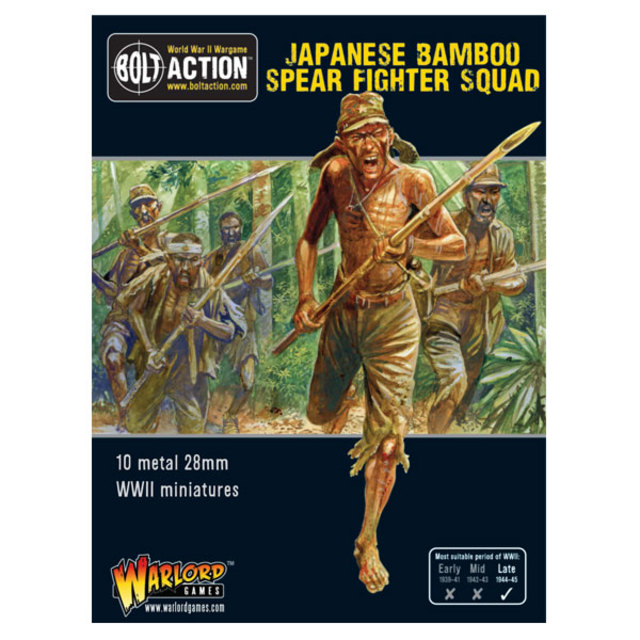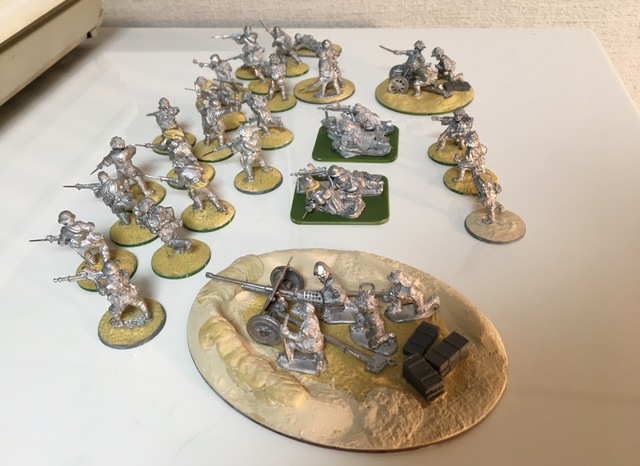Change, as we all know, is a constant. Things come and go in wargaming and on the Internet as in all other areas of life.
In general, it seems commonly acknowledged that the virtual hobby community has been splintering as new social media platforms appear, each catering to more specialized interest- Facebook, new rule-specific fora, blogs- what have you.
I don't see that in itself as being a bad thing, but it has been making me take a look at La Bricole, and for a long time now I had been wondering if the time has come to close it down.
Traffic had been slow to non-existent in recent months, and I'm responsible in large part for the slide. I have to admit to myself that I haven't done nearly as much as I could have done- if at all- to reverse the trend. Partly this has been due to the law of diminishing returns- the fewer the posts, the less people visit, so that then fewer people could be bothered to post- me included.
This was not helped by the dreadful- and poorly handled- migration to Yuku, who have almost killed the site for me in terms of trying to administer it. It resurfaced with a clunky interface, is unattractive, and has been horribly unreliable. I found myself "locked out" of my own forum on many occasions, faced with disappearing avatars, and almost nonexistent communication- or piss-poor people skills with Yuku staff when it did occur. Before the migration, we had a lively and active forum for its size.
So what with traffic decreasing alarmingly I found myself getting my Napoleonic fix on other fora out there, primarily TMP, and was on the verge of closing down La Bricole for good.
But these days there has been no joy at TMP either. That is another forum in decline, but for very different reasons.
I had been a member there since the turn of the century, and at one point was even a subscriber. But no longer. Over the years TMP has inexorably been getting further away from what it originally did best, serve as a place people could get together to discuss gaming.
Somewhere along the line I feel the site has lost its way. For a long time I just held my nose, and tried to ignore the antics and nastiness that went on, but it has reached a point where just sticking my head in the sand, turning off the more poisonous boards, and hoping the noise would go away is no longer an option. No use me pretending that its just a harmless hobby site. It's not.
Some of the stuff being posted there now is plain toxic. I know I'm not alone in thinking the moderation (sic) has become increasingly capricious and erratic, alternating between the heavy handed or alternately the non-existent. TMP's FAQ has more rules than you would find in an old SPI mega-game, but it doesn't appear to help- there are still more dramas and meltdowns than all other hobby sites combined.
Ultimately it's just not a healthy pool any more for me to want to swim in.
There are a lot of decent posters there for sure; talented and enthusiastic people I like, and for whom I have a lot of time- you know who you are!
A number of boards seem in danger of becoming no more than echo chambers, safe-spaces where those of a certain political slant can spout off drivel to their hearts content- especially given the purges that have been taking place of late. I really don't want to know what the politics of other gamers might be. Gaming for me is a hobby, a place to put all the real-world crap aside for a bit.
Weird scenes inside the Gold Mine, and I no longer want any part of it. It's been very frustrating watching the decline, but hey- Bill's house, Bill's rules. It is his right to run the site the way he wants it- and it's my choice as to whose company I wish to keep. Thank you for your service, TMP- but I have better uses for my time.
Fortunately, there are some much more professionally administered alternatives out there, such as the LAF, TWW or The Guild.
So as that door closes, I need to keep others ajar. Bottom line- I have decided to keep La Bricole going.
I will keep it as if for now, and will endeavor to try and post there regularly (when it lets me!). Perhaps traffic will pick up, who knows. But by August it will get a reboot, and I will start it up again using a different forum platform- probably PhP-BB, but I'm open to alternatives.
It will take a very long time to build up an active membership again- should it ever do. But now that I'm through with TMP- and I know for sure that I am not the only one-, I still believe there is room for a wargaming forum with a focus on Napoleonic Wargaming- without the sandbox spats! I'll give it a shot anyway and see what happens.
And the most active wargaming forum of which I'm a member happens also to be the smallest, so it is not just a matter of numbers.
In general, it seems commonly acknowledged that the virtual hobby community has been splintering as new social media platforms appear, each catering to more specialized interest- Facebook, new rule-specific fora, blogs- what have you.
I don't see that in itself as being a bad thing, but it has been making me take a look at La Bricole, and for a long time now I had been wondering if the time has come to close it down.
Traffic had been slow to non-existent in recent months, and I'm responsible in large part for the slide. I have to admit to myself that I haven't done nearly as much as I could have done- if at all- to reverse the trend. Partly this has been due to the law of diminishing returns- the fewer the posts, the less people visit, so that then fewer people could be bothered to post- me included.
This was not helped by the dreadful- and poorly handled- migration to Yuku, who have almost killed the site for me in terms of trying to administer it. It resurfaced with a clunky interface, is unattractive, and has been horribly unreliable. I found myself "locked out" of my own forum on many occasions, faced with disappearing avatars, and almost nonexistent communication- or piss-poor people skills with Yuku staff when it did occur. Before the migration, we had a lively and active forum for its size.
So what with traffic decreasing alarmingly I found myself getting my Napoleonic fix on other fora out there, primarily TMP, and was on the verge of closing down La Bricole for good.
But these days there has been no joy at TMP either. That is another forum in decline, but for very different reasons.
I had been a member there since the turn of the century, and at one point was even a subscriber. But no longer. Over the years TMP has inexorably been getting further away from what it originally did best, serve as a place people could get together to discuss gaming.
Somewhere along the line I feel the site has lost its way. For a long time I just held my nose, and tried to ignore the antics and nastiness that went on, but it has reached a point where just sticking my head in the sand, turning off the more poisonous boards, and hoping the noise would go away is no longer an option. No use me pretending that its just a harmless hobby site. It's not.
Some of the stuff being posted there now is plain toxic. I know I'm not alone in thinking the moderation (sic) has become increasingly capricious and erratic, alternating between the heavy handed or alternately the non-existent. TMP's FAQ has more rules than you would find in an old SPI mega-game, but it doesn't appear to help- there are still more dramas and meltdowns than all other hobby sites combined.
Ultimately it's just not a healthy pool any more for me to want to swim in.
There are a lot of decent posters there for sure; talented and enthusiastic people I like, and for whom I have a lot of time- you know who you are!
A number of boards seem in danger of becoming no more than echo chambers, safe-spaces where those of a certain political slant can spout off drivel to their hearts content- especially given the purges that have been taking place of late. I really don't want to know what the politics of other gamers might be. Gaming for me is a hobby, a place to put all the real-world crap aside for a bit.
Weird scenes inside the Gold Mine, and I no longer want any part of it. It's been very frustrating watching the decline, but hey- Bill's house, Bill's rules. It is his right to run the site the way he wants it- and it's my choice as to whose company I wish to keep. Thank you for your service, TMP- but I have better uses for my time.
Fortunately, there are some much more professionally administered alternatives out there, such as the LAF, TWW or The Guild.
So as that door closes, I need to keep others ajar. Bottom line- I have decided to keep La Bricole going.
I will keep it as if for now, and will endeavor to try and post there regularly (when it lets me!). Perhaps traffic will pick up, who knows. But by August it will get a reboot, and I will start it up again using a different forum platform- probably PhP-BB, but I'm open to alternatives.
It will take a very long time to build up an active membership again- should it ever do. But now that I'm through with TMP- and I know for sure that I am not the only one-, I still believe there is room for a wargaming forum with a focus on Napoleonic Wargaming- without the sandbox spats! I'll give it a shot anyway and see what happens.
And the most active wargaming forum of which I'm a member happens also to be the smallest, so it is not just a matter of numbers.
*****
Finally, confessions of an aging grognard: I've been finding the eyestrain creeping up on my during painting- a result of spending a lot of time at computers, and the consequences of having well over a half-century's worth of birthdays behind me.
So I ordered an Optivisor from Front Rank.
So I ordered an Optivisor from Front Rank.
Definitely an improvement for making out the detail, and well worth the money. And it creeps out the cats.
Somehow a regiment of French Chasseurs à Cheval had- fortuitously- found its way into the box, evidently for ballast (that's my story, and I'm sticking to it...).
And that's probably the last unit of French I "need". I do hanker after Mirliton's mounted bandsmen, though.
Somehow a regiment of French Chasseurs à Cheval had- fortuitously- found its way into the box, evidently for ballast (that's my story, and I'm sticking to it...).
And that's probably the last unit of French I "need". I do hanker after Mirliton's mounted bandsmen, though.






































































